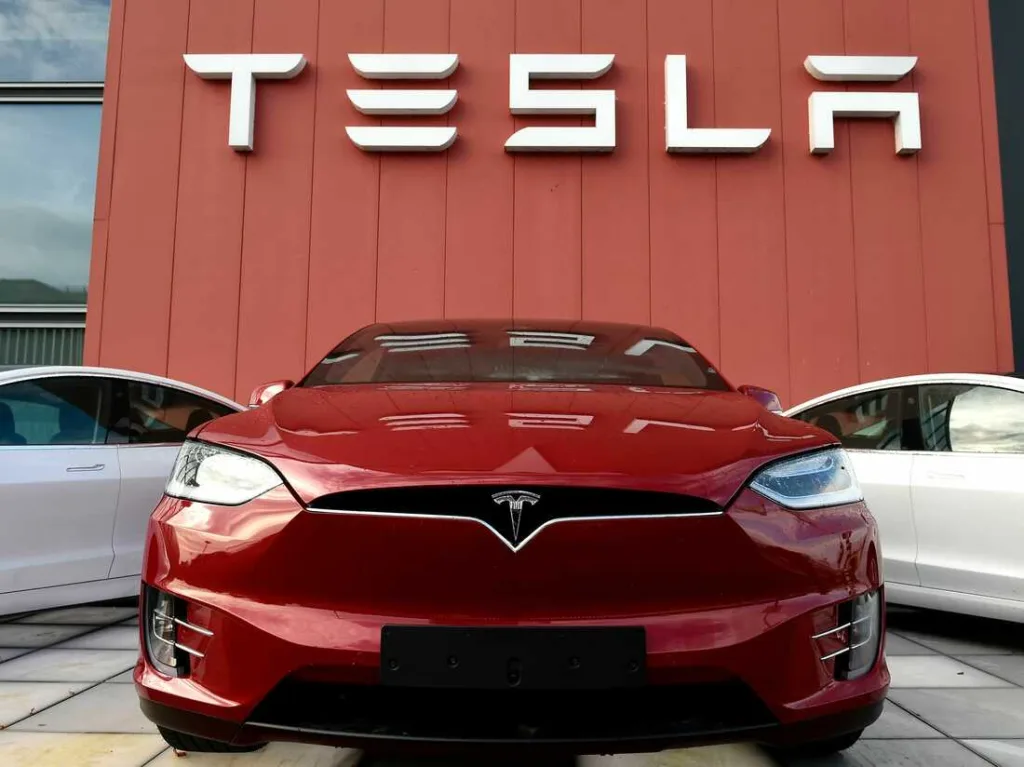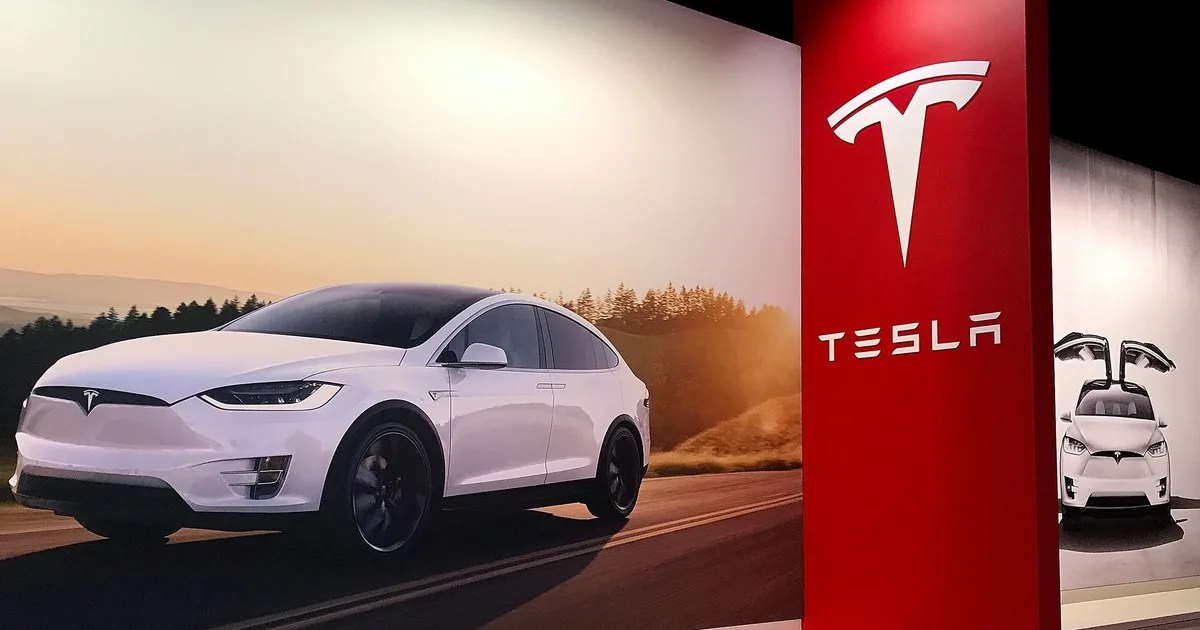Have you ever wondered how Tesla, the revolutionary electric car company, makes money? I know I have! With their sleek designs and cutting-edge technology, it’s hard not to be curious about their success. As a self-proclaimed fan of the brand and someone who has been following them closely for years, I can confidently break down exactly how they make money.
In this article, we’ll dive into the various sources of revenue for Tesla and explore how they make each stream work in their favor. From vehicle sales and services to energy products and government incentives, we’ll uncover all the ways that Tesla brings in profits. Whether you’re a loyal fan or just interested in learning more about the company’s financial success, this article is for you! So let’s take a closer look at how Tesla makes money.
So, how Tesla makes money?
Tesla makes money through various revenue streams, including the sale of electric vehicles, energy storage systems, and solar products. They also generate income from their services division and government incentives.
The majority of Tesla’s revenue comes from the sale of their electric vehicles. In 2020 alone, they sold over 500,000 cars worldwide. This is a significant increase from previous years and shows the growing demand for sustainable transportation options.
In addition to vehicle sales, Tesla also earns money through their energy division. They offer home battery storage solutions as well as large-scale energy storage projects for commercial clients. This sector has seen substantial growth in recent years due to an increased focus on renewable energy sources.
Another revenue source for Tesla is their solar products division. They sell solar panels and roofs that harness the sun’s power to provide clean energy for homes and businesses. With the rising cost of traditional electricity sources, there has been a growing interest in utilizing solar technology.
Aside from product sales, Tesla also generates income through its services division. This includes maintenance and repair services for their vehicles as well as software updates and upgrades.
Lastly, government incentives play a role in Tesla’s revenue stream. Many countries offer tax credits or subsidies to incentivize individuals or companies to purchase electric vehicles or invest in renewable energy sources like solar panels.
In conclusion, Tesla’s diverse revenue streams allow them to continue innovating sustainable technologies while remaining profitable as a company.
Analyzing Tesla’s Profit from Vehicle Sales and Services
When we talk about Tesla and its profit, it’s fascinating to look closely at two main areas: vehicle sales and services. The company has mastered the art of making electric cars not just eco-friendly but also desirable. With sleek designs and cutting-edge technology, Tesla’s vehicles attract a wide range of customers who are eager for innovation. Every time someone purchases a Tesla, the company earns revenue from that sale, which significantly contributes to overall profits. Notably, their models like the Model 3 and Model Y have gained immense popularity due to their affordability compared to luxury models while still offering impressive features like advanced autopilot systems.
Additionally, let’s not forget about the services aspect that enhances Tesla’s profit margin even further. Each vehicle sold often leads to ongoing relationships through maintenance packages or software updates that improve performance over time. Tesla provides:
– Regular software upgrades
– Maintenance checks
– Repair services
These offerings create an ecosystem where customers feel valued long after their initial purchase. Overall, with strong sales figures combined with supportive service options, Tesla is in a unique position within the automotive industry—making them more than just a car manufacturer; they are becoming a lifestyle choice for many environmentally conscious drivers around the world.
Understanding Revenue Generation through Tesla’s Energy Products
Tesla’s energy products, including solar panels and the Powerwall battery system, play a significant role in the company’s revenue generation. These innovations not only offer sustainable energy solutions but also present unique economic opportunities for consumers. By harnessing the sun’s power through solar panels, homes can reduce their reliance on traditional electricity sources. This shift can lead to substantial savings over time as homeowners enjoy lower utility bills while contributing to a cleaner environment. The Powerwall stores excess energy generated during sunny days, allowing families to use that stored power when needed—especially during peak hours or outages.
Beyond individual households, Tesla’s energy products have broader implications for businesses and communities aiming for sustainability. Energy independence becomes an attainable goal with such systems. When combined with smart technology, these products optimize energy consumption patterns efficiently.
Moreover, governments are increasingly offering incentives for renewable installations which further stimulates sales growth in this sector.
- The integration of clean technology.
- The potential for grid stabilization.
- A growing market driven by climate awareness.
As more people realize the benefits of adopting Tesla’s innovative solutions, we see a promising trajectory toward robust revenue streams grounded in environmental responsibility and financial prudence.
Read also: Paypal partnerships
Exploring the Role of Software Upgrades in Tesla’s Financial Success
Tesla’s financial success can be largely attributed to its innovative approach to software upgrades, which sets it apart from traditional automotive companies. Unlike conventional vehicles that often require physical alterations for improvements, Tesla utilizes over-the-air (OTA) updates to enhance functionality and performance seamlessly. This means that a customer’s car can receive new features or bug fixes without needing a trip to the dealership. For instance, enhancements in battery life or autopilot capabilities can be delivered directly to users’ vehicles, increasing their satisfaction and trust in the brand. The ability to continually upgrade cars helps maintain high resale values, as buyers know they are investing in technology that evolves rather than stagnates.
Moreover, these frequent software updates create an ongoing revenue stream through subscription services and premium features. Tesla has cleverly introduced options such as enhanced autopilot and full self-driving capabilities for an additional fee—allowing customers access while generating consistent income for the company. This model not only keeps customers engaged but also fosters a community around innovation and sustainability. By combining cutting-edge technology with exceptional user experiences through software upgrades, Tesla has carved out a profitable niche in the automotive industry that many competitors struggle to replicate.
In essence, Tesla’s strategy showcases how modern technology can redefine value propositions within established markets.

Decoding Government Incentives: A Significant Stream for Tesla’s Profits
Tesla has skillfully navigated the complex landscape of government incentives, transforming these offerings into a consistent source of revenue. Many countries provide financial support for electric vehicles (EVs) as part of their efforts to combat climate change. This means that when you purchase a Tesla, you might receive tax credits or rebates, making the cars more affordable and appealing to buyers. These incentives not only boost sales but also allow Tesla to maintain competitive pricing against traditional gasoline-powered vehicles. Furthermore, by taking advantage of various clean energy programs, the company can invest in research and development while keeping its production costs down.
In addition to direct consumer benefits, Tesla leverages government partnerships and grants aimed at fostering sustainable technology. For instance, state-level initiatives often promote innovations in battery technology and charging infrastructure—areas where Tesla excels. This strategic collaboration helps sustain growth while pushing forward green policies that benefit society at large. Moreover, as governments worldwide increasingly prioritize sustainability goals through legislation or funding projects like solar energy initiatives or public transportation electrification, companies like Tesla stand poised to reap substantial rewards from this shift toward greener practices.
Ultimately, these governmental relationships are not just about profit; they signify a broader movement towards an eco-friendly future where innovative businesses thrive alongside supportive policies.
You may also like: How To Make Money On FeetFinder
Assessing Other Key Factors Contributing to Tesla’s Monetization Strategies
When we think about Tesla’s success, it’s not just about their shiny electric cars zooming down the road. There are many other important pieces that help them earn money. First off, innovation plays a huge role. Tesla is always looking for new ways to improve both their vehicles and how they do business. For example, they’ve developed a robust network of Superchargers that allows customers to easily charge their cars while on long journeys. This convenience keeps drivers happy and encourages more people to switch from gas-powered vehicles to electric ones.
Another key factor in Tesla’s monetization strategies is its focus on sustainability. As our world becomes more conscious of climate change, consumers are increasingly interested in eco-friendly options. By positioning themselves as leaders in sustainable technology—like solar energy products and battery storage solutions—Tesla appeals not only to car buyers but also to environmentally-aware individuals seeking green home solutions. Moreover, the company’s direct sales approach cuts out middlemen like dealerships, allowing for better customer relationships and higher profit margins. All these elements together create a unique blend that keeps Tesla at the forefront of innovation while steadily increasing its profits in a competitive market.
Unraveling the Complexity of How Tesla Makes Money
Tesla’s journey to profitability is nothing short of fascinating. To understand how this innovative company generates revenue, it’s essential to look at multiple sources that contribute to its financial success. First and foremost, Tesla earns a significant portion of its income through the sales of electric vehicles (EVs). With models like the Model 3 and Model Y gaining popularity due to their impressive range and advanced technology, consumers are increasingly choosing EVs over traditional gas-powered cars. Each car sold not only brings in direct profits but also enhances the brand’s reputation as a leader in sustainable transportation.
In addition to vehicle sales, Tesla has ventured into other avenues for revenue generation. They operate a growing business around energy products such as solar panels and battery storage systems. This part of their operation promotes renewable energy solutions while appealing to eco-conscious customers looking for green alternatives for their homes. Furthermore, the sale of regulatory credits plays an important role in balancing the books; other automakers purchase these credits from Tesla to meet environmental regulations they cannot achieve on their own. Through this multifaceted approach—vehicle sales, energy products, and regulatory credit transactions—Tesla creates a dynamic model that fosters both innovation and sustainability while driving profit growth.

